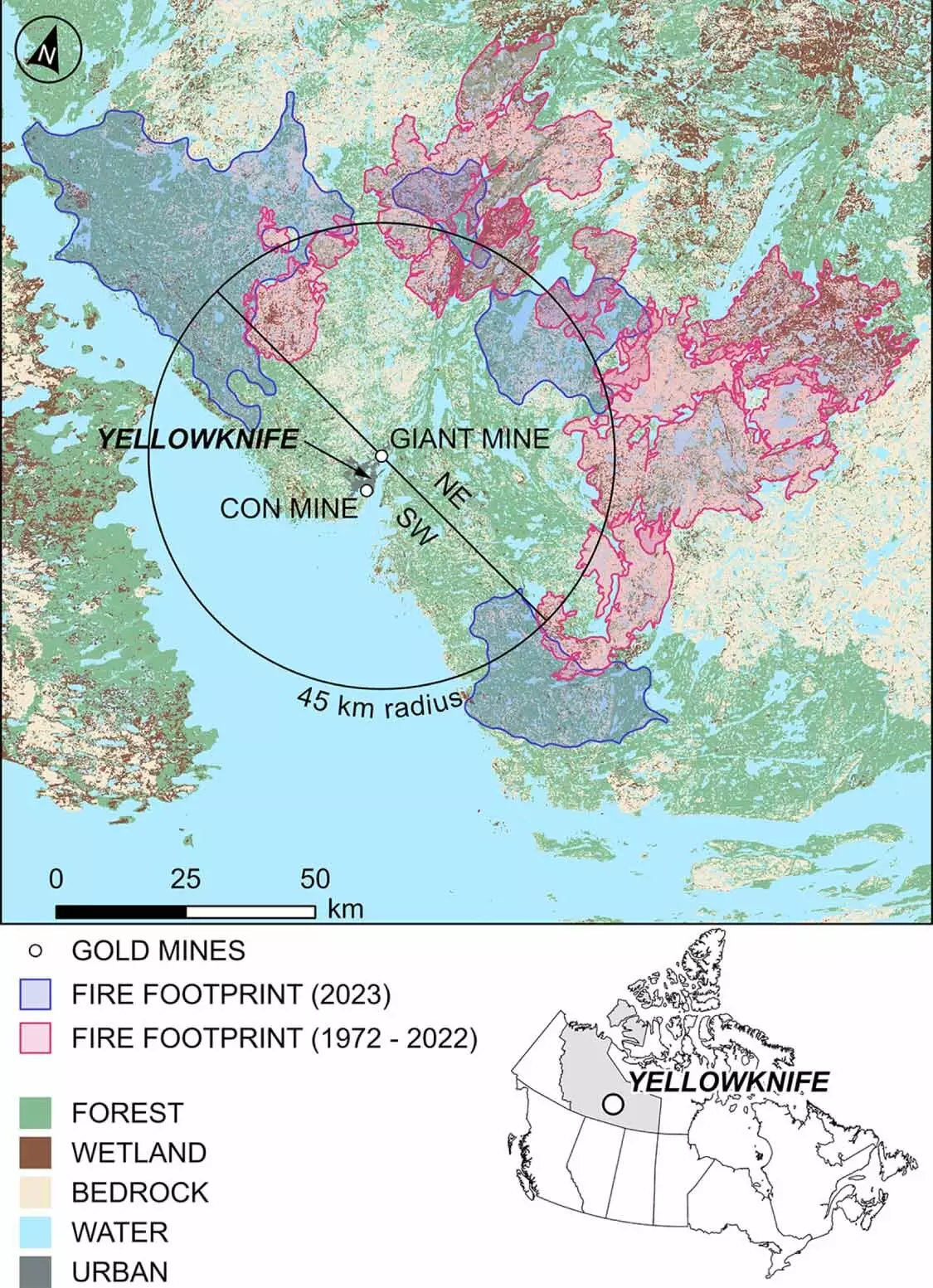The wildfire season of 2023 carved a grim chapter in Canada’s environmental history. Spanning scorching flames and devastating land destruction, this season was not just another yearly occurrence; it shattered records, positioning itself as the most destructive wildfire season yet. However, beyond the immediate aftermath of charred landscapes, a new study raises profound concerns about the long-term health impacts of these wildfires, specifically regarding the toxic element arsenic. This link between wildfires and arsenic emissions underscores a pressing environmental public health crisis that demands attention.
Unveiling the Toxic Legacy of Mining
Research conducted by a collaborative team from the University of Waterloo and Nipissing University offers a stark revelation: four wildfires in mine-impacted areas around Yellowknife potentially released between 69 and 183 tonnes of arsenic, a nearly unimaginable amount considering the global emissions from wildfires each year. These findings reveal that areas historically shaped by mining activities are not merely ecological patches but ticking time bombs of toxicity when subjected to the destructive forces of fire. This is especially troubling given the World Health Organization’s classification of arsenic exposure as a catalyst for serious health issues like diabetes, cancer, and, horrifyingly, infant mortality.
Arsenic is notorious for its insidious nature. Typically locked away in soils, its release during wildfires highlights a particularly pernicious side effect of climate change. With the frequency and intensity of wildfires predicted to escalate, regions like Yellowknife—rich in mining history but fraught with contamination—could find themselves at an unprecedented risk.
The Geopolitics of Fire and Toxicity
What makes the situation even more alarming is that Yellowknife is not an isolated case. Canada contains numerous industrially contaminated sites across its vast landscape, all vulnerable to similar catastrophic events of wildfire. This geological vulnerability raises critical questions: How can countries with a layered history of mining safeguard their ecosystems? Furthermore, should we be developing a global framework to address wildfire emissions that incorporate lessons learned from specific localities?
Dr. Owen Sutton, a prominent figure in the study, states that the interplay of historical industrial activities with present-day wildfire risks forms a whirlwind of unpredictable environmental outcomes. This combination emphasizes a necessity for comprehensive environmental assessments that acknowledge the past while preparing for future climate realities.
The Complexity of Arsenic Emissions
The researchers tasked themselves with a daunting investigation into the dynamics of how wildfires release arsenic into the atmosphere. Emissions from wildfires are not uniform; they depend on myriad variables such as soil types, fire temperature, and even the depth to which the fire burns. The complexity of these interactions suggests an urgent need for multidisciplinary collaboration among experts ranging from chemists to policymakers.
Dr. Colin McCarter’s assertion for collaborative investigations is particularly salient in this context. Future strategies need an inclusive approach that integrates traditional ecological knowledge, especially Indigenous fire stewardship practices, which have proven vital in managing fire risks sustainably. By marrying traditional ecological wisdom with scientific understanding, communities may find innovative solutions to mitigate emerging risks.
Wetlands: A Hidden Threat
One of the most pressing findings from the study is the alarming concentration of arsenic emissions coming from wetlands. Unlike forests, wetlands have a propensity to store contaminants, making them an unforeseen danger when wildfires ignite. Understanding the dynamics of these ecosystems is critical, as they can potentially act as vast reservoirs of toxins waiting for the catalyst—a wildfire.
The researchers’ future mission will focus on quantifying the toxins stored in northern peatlands and the potential for other heavy metals to be released from these environments. This line of inquiry not only has implications for air quality and public health but also for the very fabric of biodiversity that these ecosystems support.
In an age of climate emergencies, where natural disasters become increasingly routine, the invisible consequences of our past choices, such as mining pollution, cannot be overlooked. The landscape of wildfire repercussions continues to unfold; we must prioritize vigorous environmental ethics in our fire management and public health agendas.


Leave a Reply